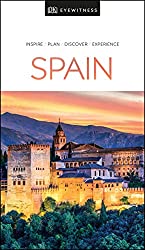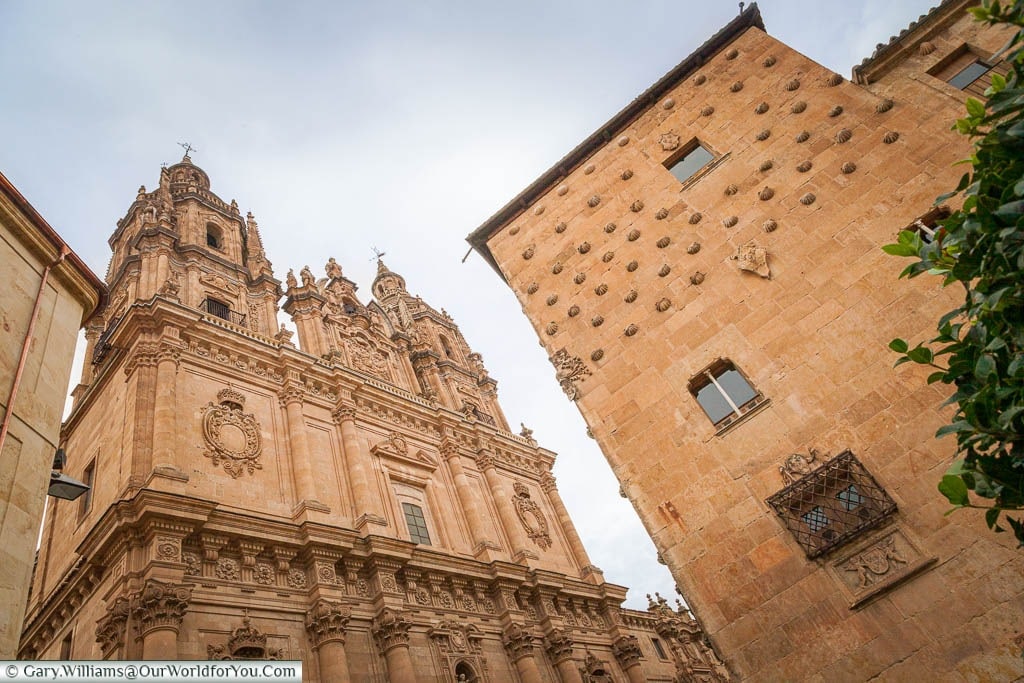
A weekend exploring Salamanca in Spain
8 things to see and do in the historic UNESCO Spanish city
Don’t you just love it when you feel like you’ve discovered a town or city that few other visitors have stumbled upon yet?
That’s how I felt when we visited Salamanca, in the Castile and León region of western Spain.
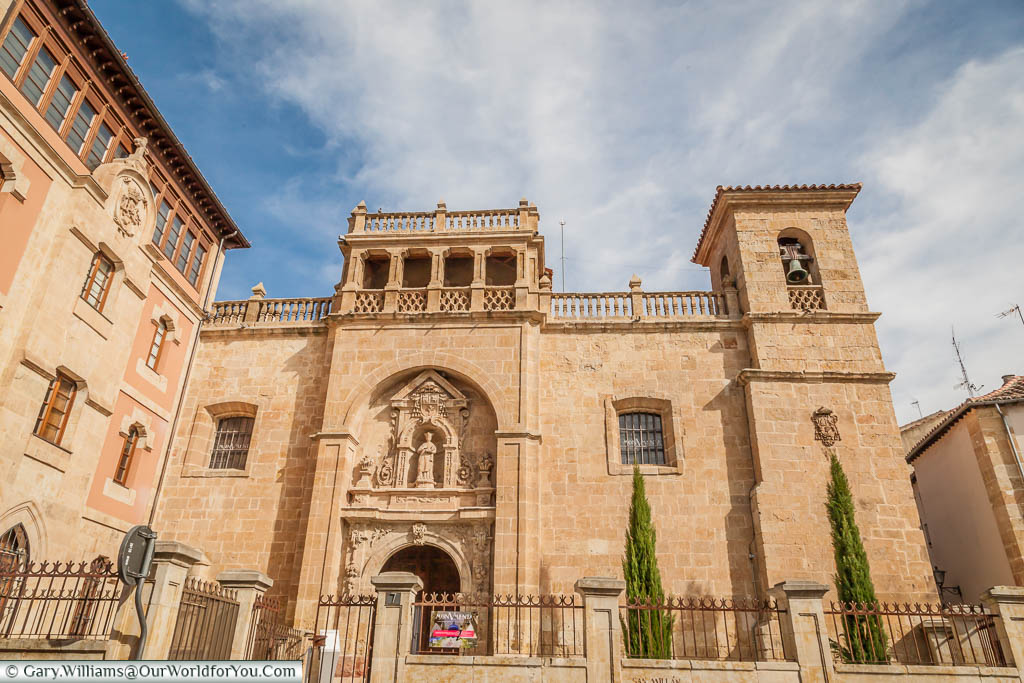
The church of San Millán, Salamanca, Spain
Undoubtedly, Salamanca attracts tourists; and why wouldn’t it with an ancient University and two cathedrals. However, you felt that the sightseers were few and far between.
I love feeling like a fly on the wall and become immersed in another countries culture, and for me, I found this in Salamanca. With very few English speakers it gave me a chance to bumble through, trying out my embarrassingly pidgin Spanish.
Quick Links
The University of Salamanca truly has some heritage. It is the third oldest University in western Europe and was founded in 1134. In 1218 it was granted Royal Charter by King Alfonso IX of León.

La Clerecía & Casa de las Conchas
The University of Salamanca has welcomed some notable names too. The author Miguel de Cervantes known for his novel Don Quixote, who ventured across the plains of La Mancha with his sidekick Sancho Panza.
Similarly, to pass through the doors is the conquistador Hernán Cortés and the navigator Christopher Columbus.
At one corner of the university stands the Baroque Clerecía Church and the pontifical university. This striking church was built around 1617 and was originally known as the Royal Jesuit college dedicated to the Holy Spirit.
The intricate sandstone ochre façade on the University is beautiful and so eye-catching. Although carved amongst the many figures above the doorway is the infamous ‘frog on a skull’.
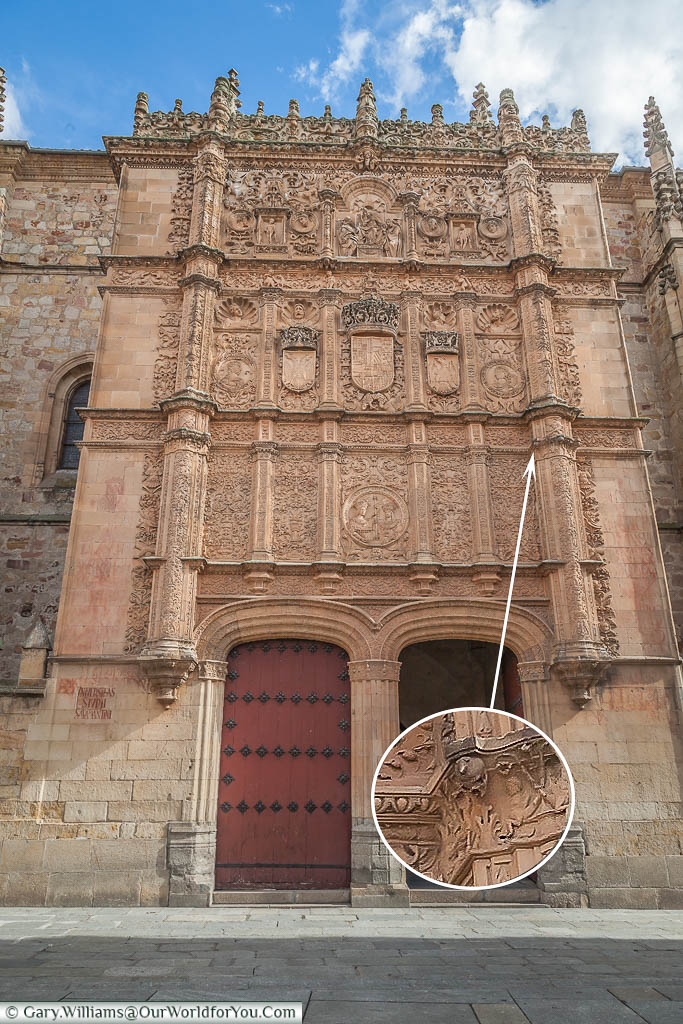
Find the the Frog
See if you can spot it when you visit? Legend has it that if a student is able to find the tiny amphibian, it will bring them luck and ensure that they will pass their exams.
A helpful guide
There are so many incredible places to discover in Spain and I love planning road trips. I often use the DK Eyewitness books, I find them extremely informative, easy to follow and the pictures and maps tempt you into searching for more.
We used a previous version of this book to plan our Spanish road trips, now you can grab the revised copy.
Not content with one Cathedral, Salamanca has two, and they are aptly named the ‘Old’ & the ‘New’.
They are located next to each other and are also connected. The Old Cathedral was constructed during the 12th and 13th-Centuries in the style of Romanesque. It is magnificent, and once again, the sandstone brickwork makes it even more stunning.
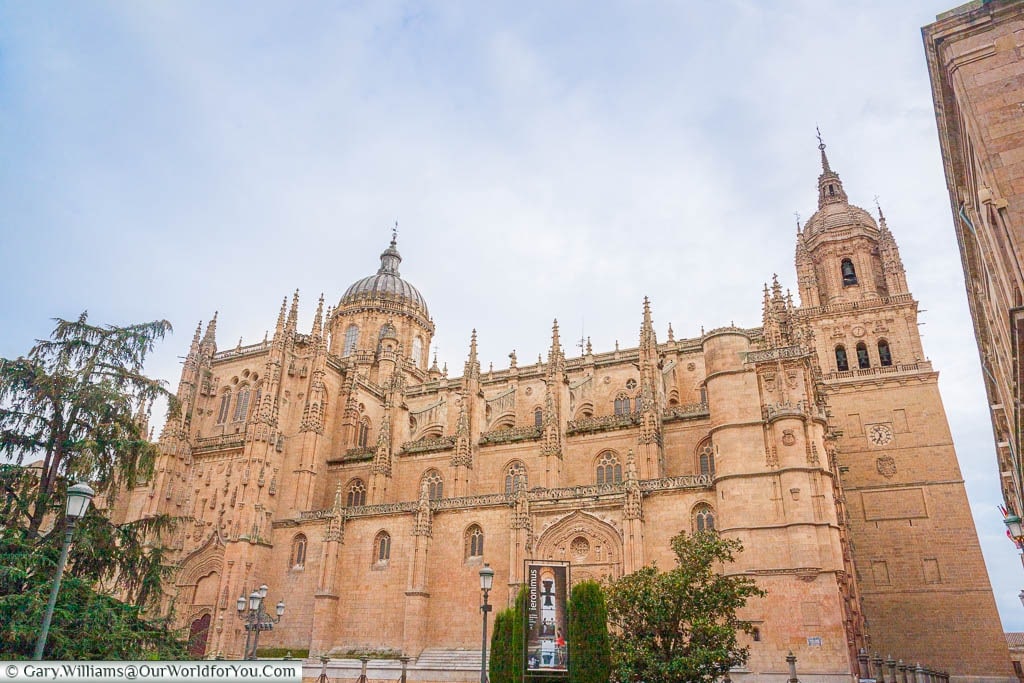
The Cathedrals
The New Cathedral nestled beside the ‘Old’ was built between the 16th and 18th centuries. This church was built in the Gothic style.
Incredibly it is still possible to see some cracks in the Cathedral which were caused by the Lisbon Earthquake in 1755. Lisbon on the coast of Portugal is around 300 miles (470km) away.
When admiring the portico of the Cathedral Nueva, the extremely eagle-eyed amongst you may spot the floating astronaut carved into the Cathedral. Apparently, this was added by one of the restorers during a renovation project in 1992.
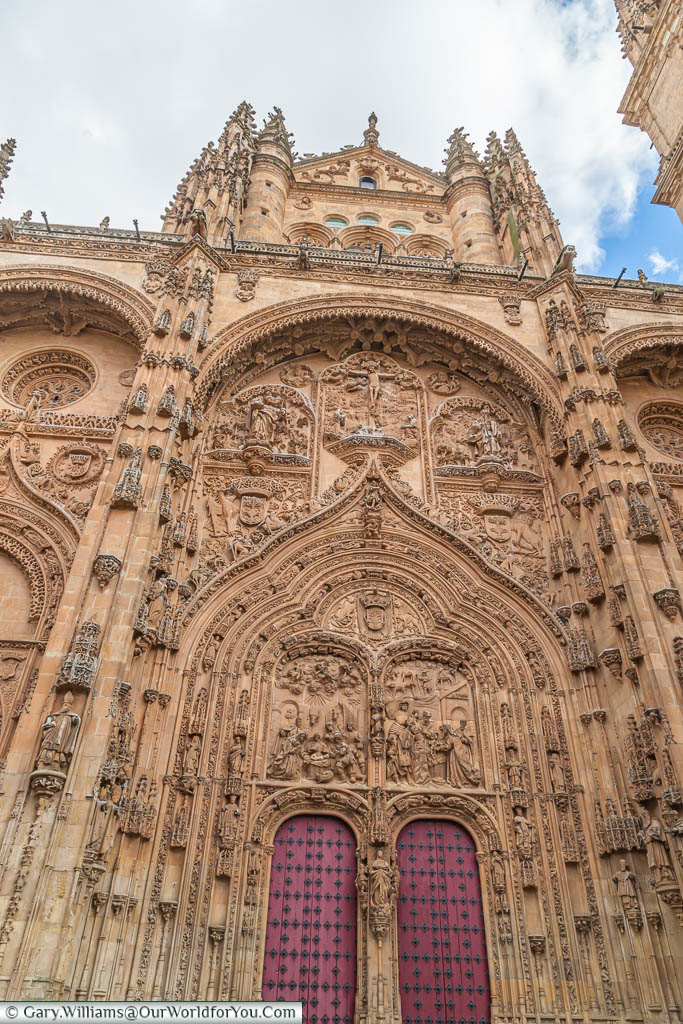
The entrance to the old Cathedral
Salamanca lay on the Roman Road of Vía de La Plata (Silver Way) a pilgrimage route. Which runs from Astorga in the north to Mérida in the south and forms part of the Camino de Santiago.
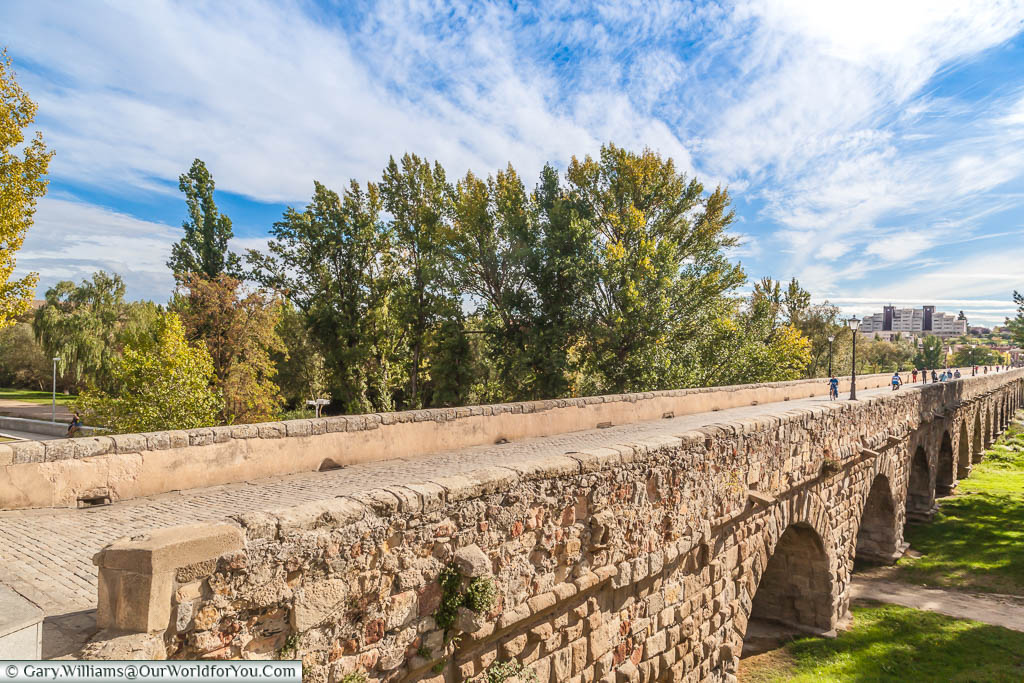
The Roman bridge of Salamanca
The path through Salamanca crosses the Roman Bridge over the Tormes River. The ancient bridge was built by the Romans in the 1st century. In 1626 a disastrous flood damaged a large part of the bridge, and with further restorations only 15 of the original 26 arches that remain are Roman.
The Roman Bridge of Salamanca was closed to vehicle traffic in 1973 and is now a pedestrian bridge.
My favourite place in Salamanca is the Plaza Mayor, I was astounded by it. We strolled through one of the arches onto the main square, and the magnificent plaza opened up before our eyes.
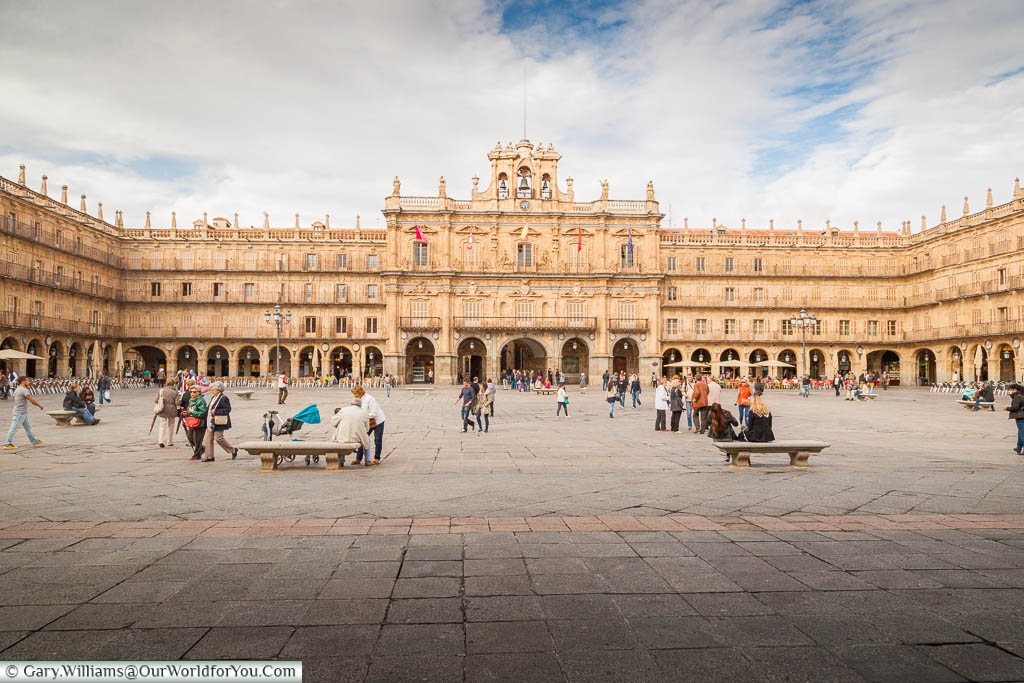
The Plaza Mayor
The grand square has been built in the baroque style, which makes it so elegant. Encircled by a wave of arches and a delightful colonnade. The arcade is full of cafés, tapas bars, restaurants, boutiques and ice cream parlours.
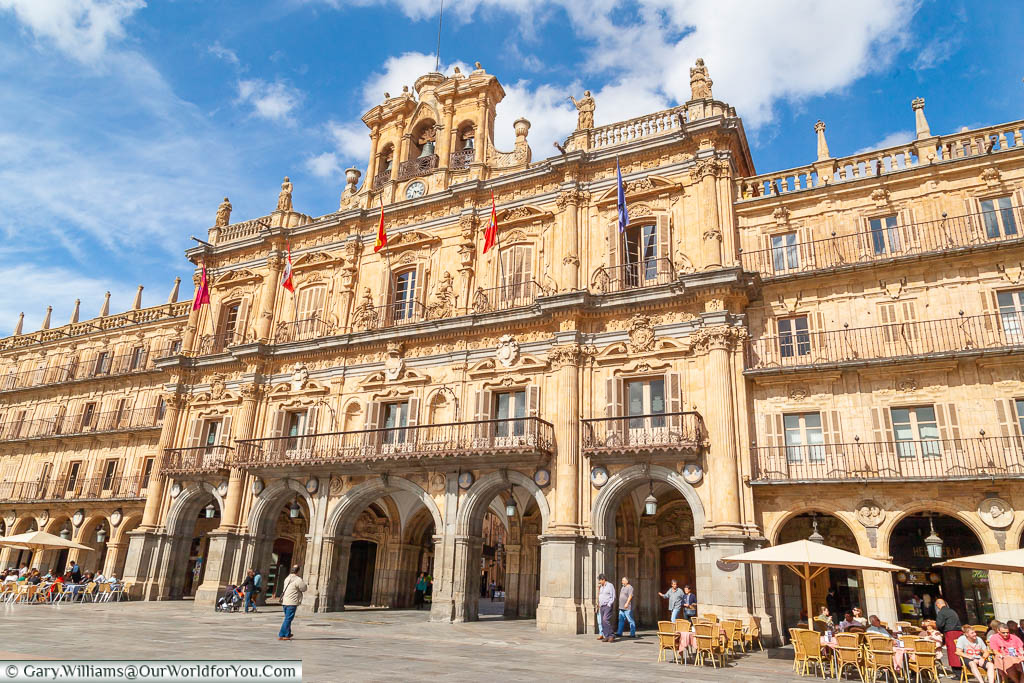
Salamanca's Town Hall
This lovely plaza is bustling day and night with people socialising with family and friends. Of an evening, the Plaza Mayor is illuminated, what better place to people watch and enjoy a glass of Cava.
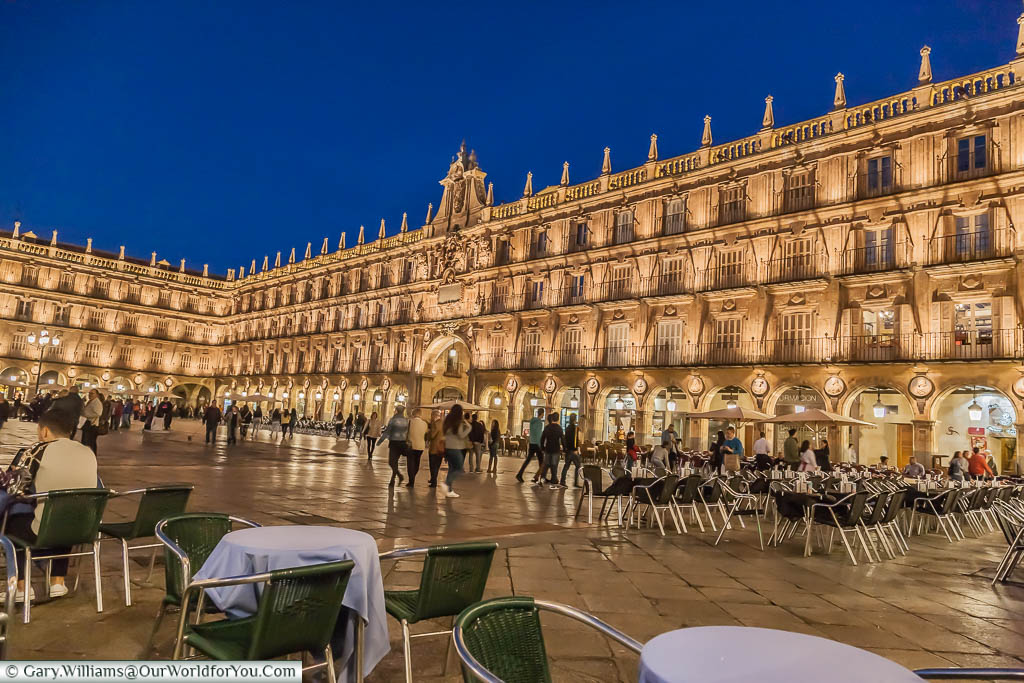
The Plaza de Mayor at dusk
Discover more
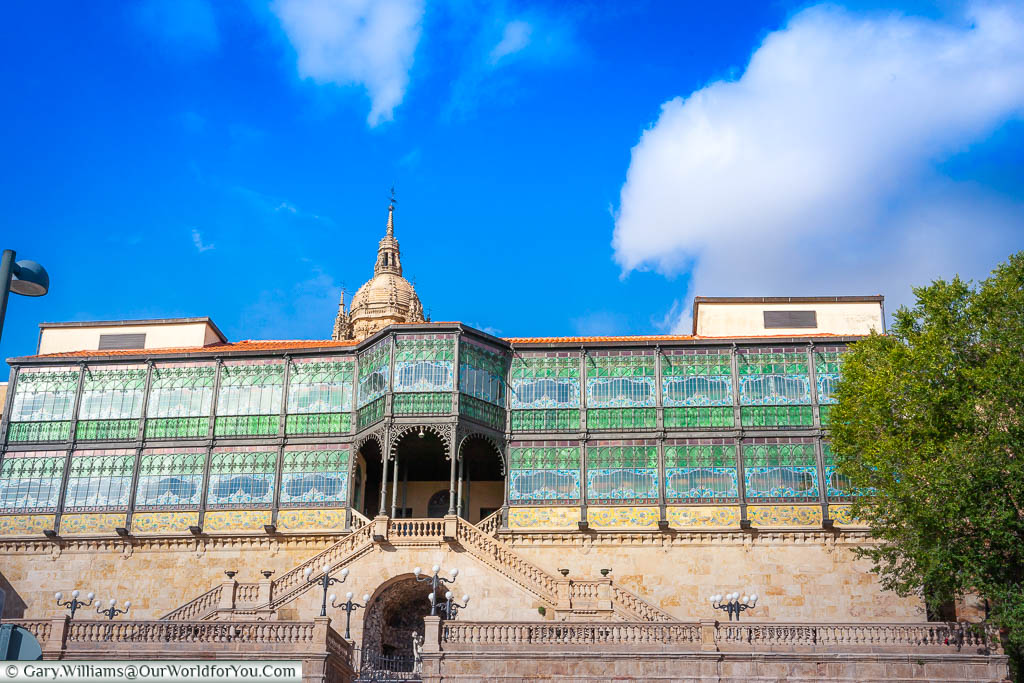
The Casa Lis
Casa Lis was built in 1905 and is Modernist building with beautiful stained-glass façade. Originally it was a private home and over the decades became run down. It was subsequently saved by the City of Salamanca.
It’s only around €4 to visit and while you’re their head to the charming café located in a colourful glass conservatory.
As mentioned above, we visited the Casa Lis, the Art Nouveau and Art Déco Museum. Having the car meant I was able to convince Gary that the Émile Gallé style Art Nouveau lamp, was coming home with us.
To be perfectly honest, Gary didn’t take a huge amount of persuading.
Now every time I look at the gorgeous lamp I’m transported back to the plazas and lanes of Salamanca.
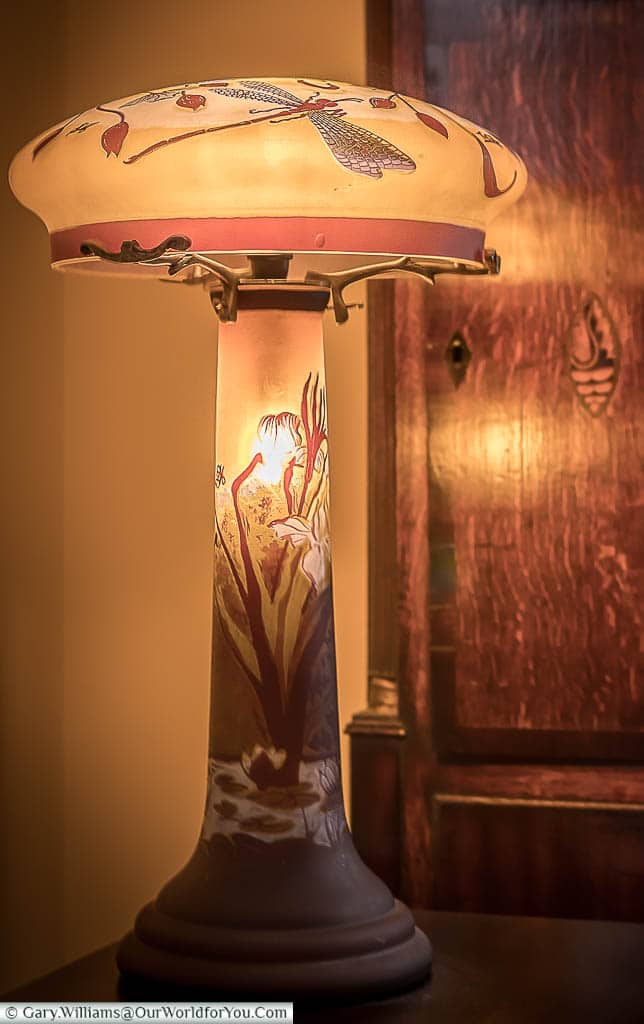
Our Art Deco lamp
Why not?
Salamanca just keeps on giving, if Casa Lis wasn’t enough this charming city also has a car museum.
There was no way I was going to be able to stroll by the museum without Gary noticing. Once again, it was only a few Euros to enter and was a delightful and informative museum.
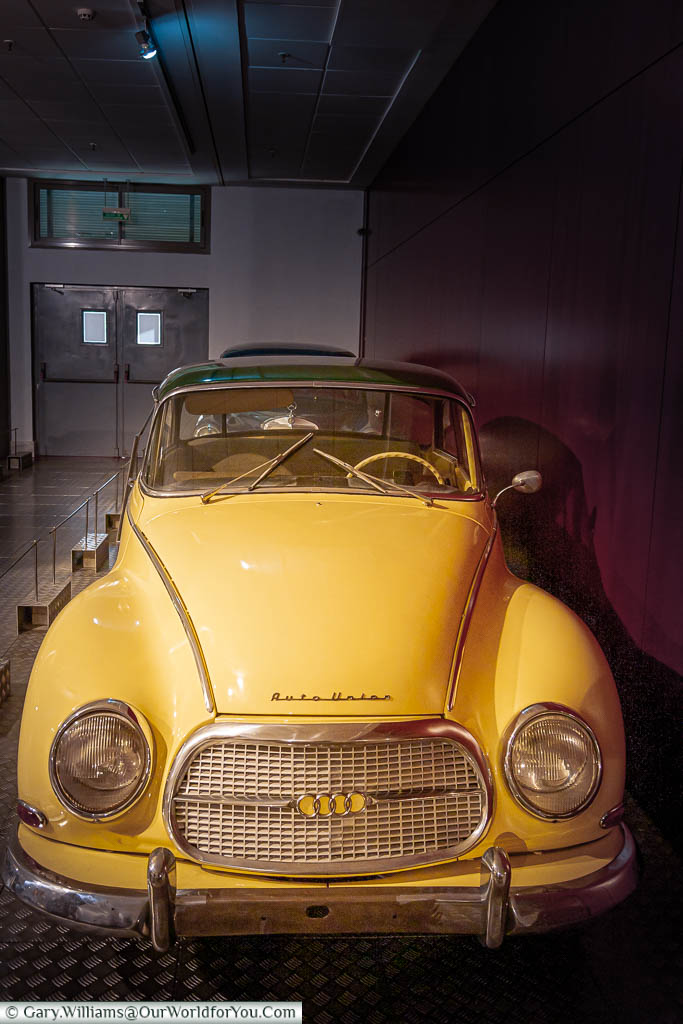
A post-war Auto Union saloon car
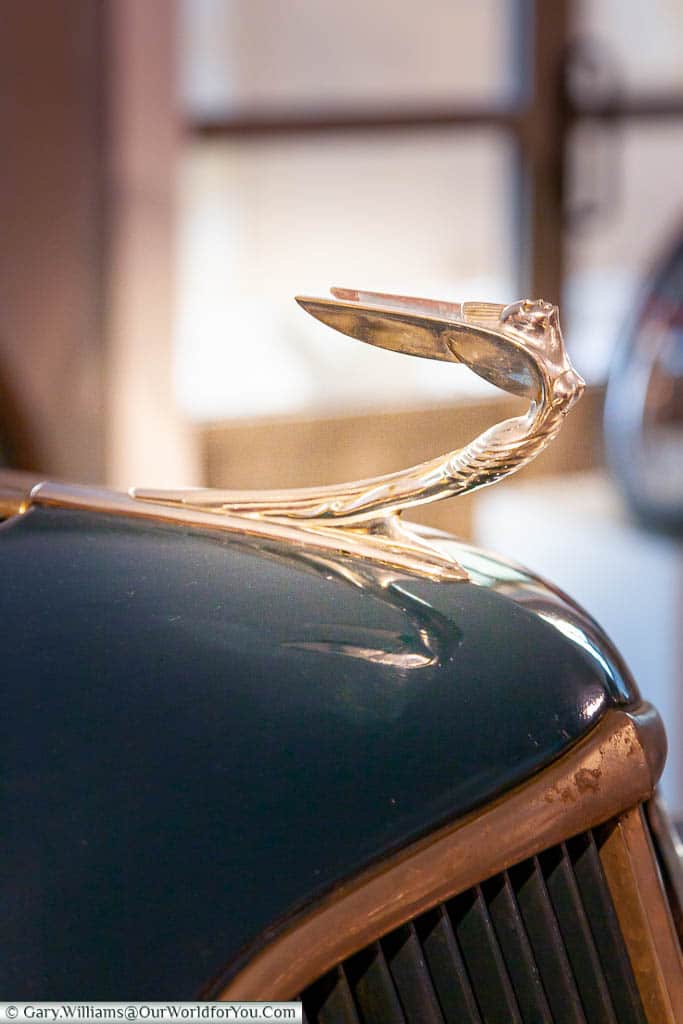
Automotive art

Fernando Alonso's Renault Formula 1
Old City of Salamanca
8 - Convento de San Esteban
The Convento de San Esteban is a Dominican monastery located in the heart of Salamanca and has once again been built using the beautiful ochre sandstone.
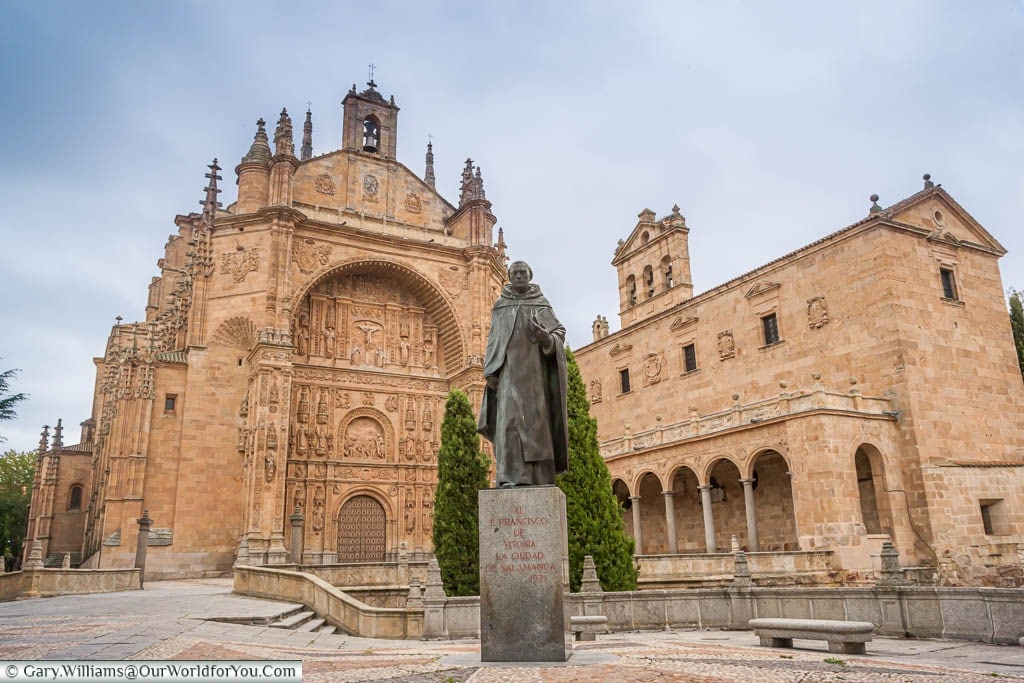
The Convent of San Esteban
The original monastery was built during the 13thcentury and was located by the Tormes River; unfortunately, this was destroyed by a flood. The construction of Convento de San Esteban within the city walls was completed in 1610, along with the beautiful church that forms part of the monastery.
The façade of the church is incredible, the Plateresque design is so striking and intricate. It’s in the same style as the façade of the University.
If the opportunity arises head inside to the Renaissance/Gothic “Cloister of the Kings” to see the lovely garden.
* This post may contain links to affiliated sites where we earn a small commission at no additional charge to you.
Inspired to visit Salamanca?
Pack your bag and start planning, there is so much to see in this ancient city.
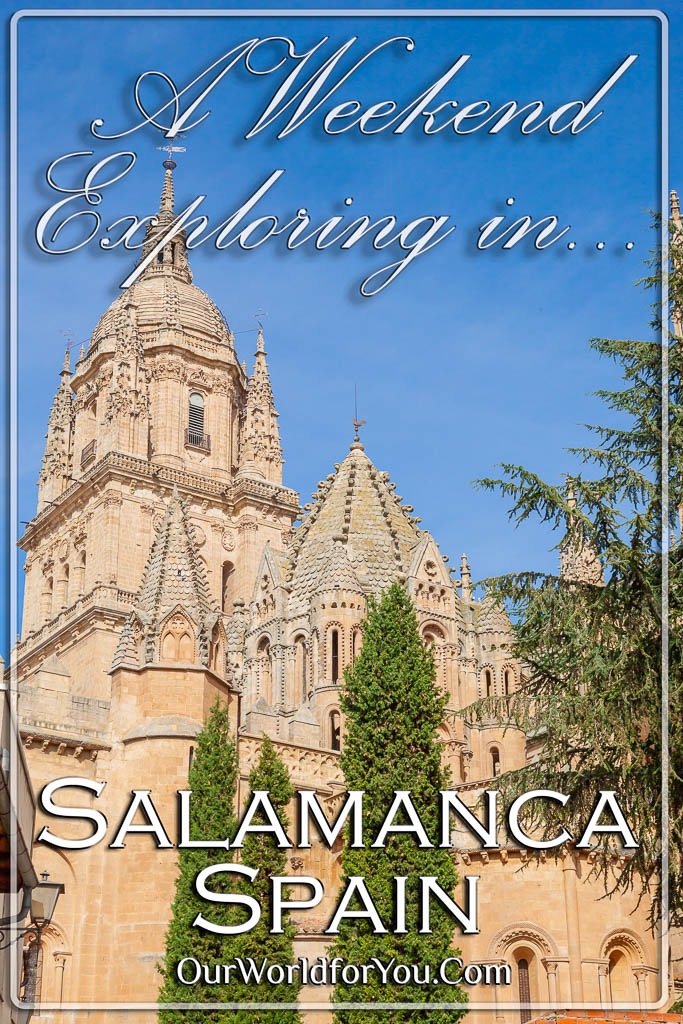
(Why not Pin It for Later?)
If you enjoy what you see, and you’d like regular updates then join us for a monthly newsletter.
